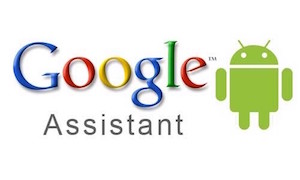 Google has jumped onto the conversational user interface (UI) train — a train that was already moving down the tracks at full speed. Google announced three distinct, but closely related, new products at their Google I/O 2016 event this week. Each of the newly unveiled products leverages conversational interactions, along with Google’s existing artificial intelligence assets.
Google has jumped onto the conversational user interface (UI) train — a train that was already moving down the tracks at full speed. Google announced three distinct, but closely related, new products at their Google I/O 2016 event this week. Each of the newly unveiled products leverages conversational interactions, along with Google’s existing artificial intelligence assets.
Google Assistant is an upgraded version of Google Now that can be accessed either via a text-based chat or a purely voice-based interface. The Assistant will be available in Google Home, Google’s new in-home smart web-connected device that competes directly with Amazon’s Echo. The Assistant will also make appearances in Allo, Google’s messaging app.
What do customer care professionals, brand managers, and other company executives need to know about the new Google AI products? The main takeaway is that conversational interfaces are in the mainstream. If the trend wasn’t cemented, Google’s move in the direction of the conversation UI legitimizes them.
As we noted in an earlier post, it’s imperative that brands start understanding the new platforms. The key is to ensure that brands offer hooks into their services, so that customers can access these services directly from within conversational interfaces. That may mean creating a bot that lives on Facebook Messenger, Kik, or Google Allo when it becomes available.
Brands should also consider building a “skill” or API to enable customers to access brand services by talking to a voice assistant such as Alexa, Google Assistant, Viv, Hound, or some other “aggregation” assistant. As Google’s products rollout later this year, more and more customers will be engaging in natural language conversations to find and buy the things they need.
Categories: Conversational Intelligence, Intelligent Assistants, Articles

 Navigating a Future of Automation: Strategic Insights from NICE’s Analyst Summit 2024
Navigating a Future of Automation: Strategic Insights from NICE’s Analyst Summit 2024  Zoom Unveils AI Companion 2.0: Advancing the AI-Assisted Workplace
Zoom Unveils AI Companion 2.0: Advancing the AI-Assisted Workplace  How Invoca’s PreSense Enables Smarter Routing and Improved Conversion Rates
How Invoca’s PreSense Enables Smarter Routing and Improved Conversion Rates  Open AI’s Realtime API: A Disruptor for Customer Self-Service?
Open AI’s Realtime API: A Disruptor for Customer Self-Service?